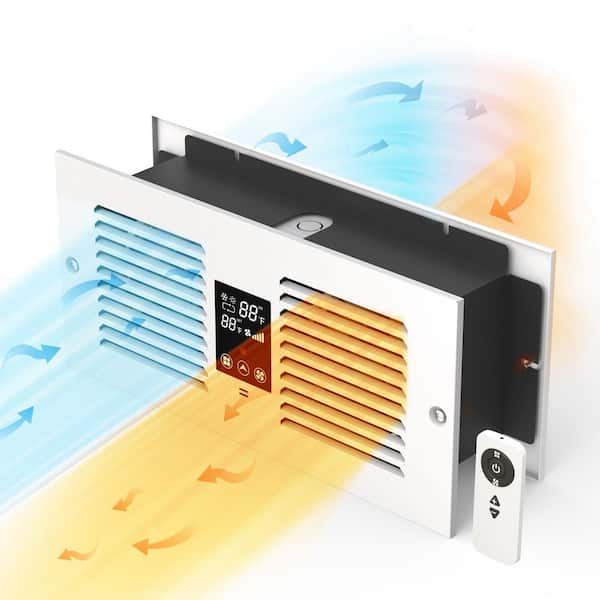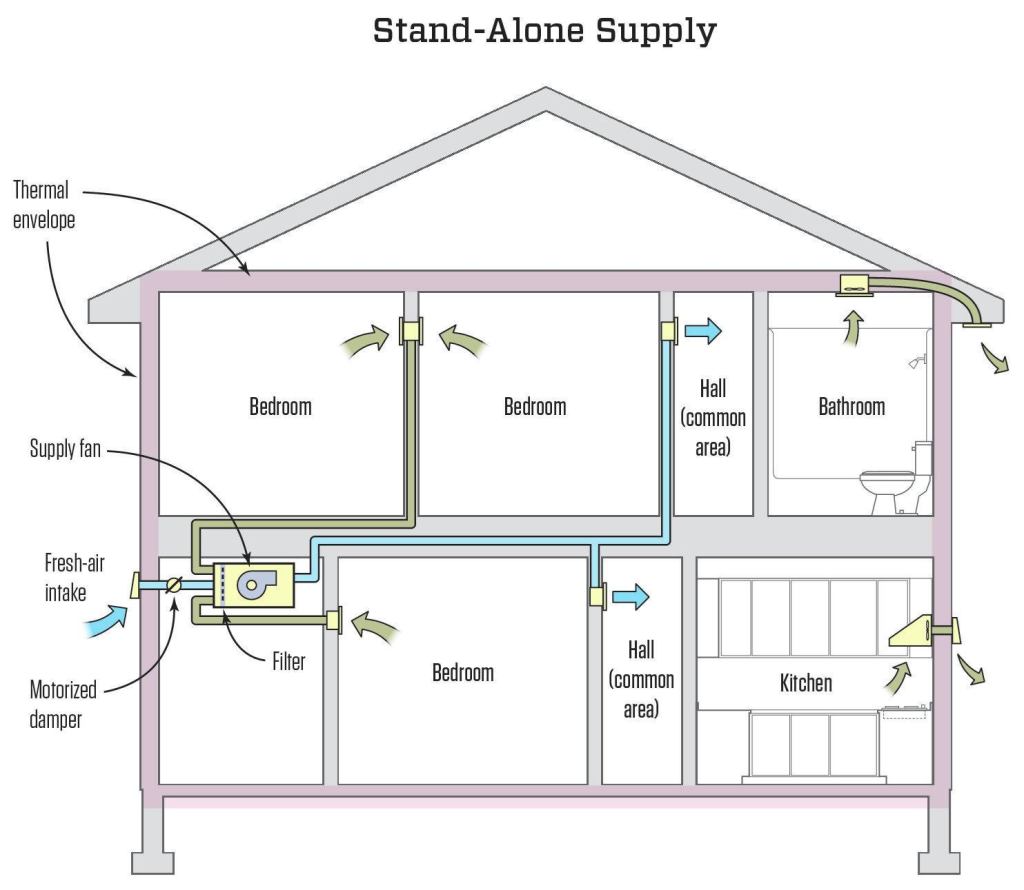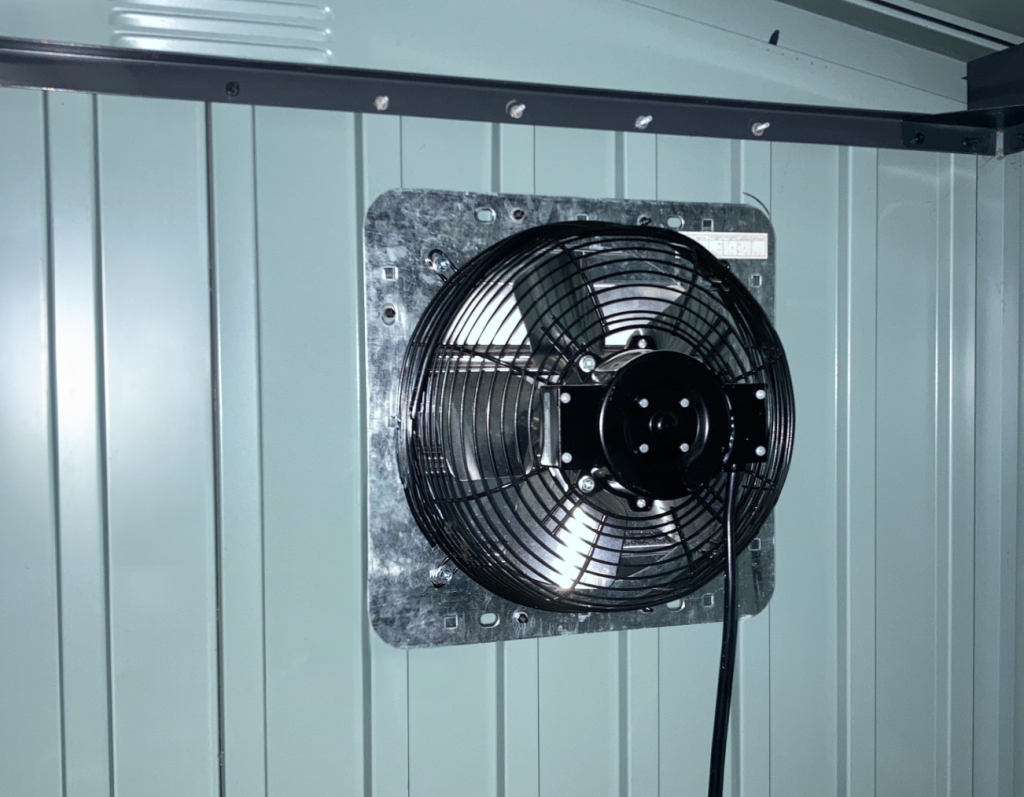Are you tired of stuffy rooms that make it hard to breathe or focus? Proper ventilation can change that fast, and using a fan is one of the simplest ways to bring fresh air into your space.
But how do you make sure your fan actually improves airflow instead of just moving hot air around? You’ll discover easy, practical tips to ventilate your room effectively with a fan. By the end, you’ll know exactly what to do to create a cooler, fresher environment that feels comfortable all day long.
Keep reading—your room’s air quality will thank you!

Credit: ezbreathe.com
Choosing The Right Fan
Choosing the right fan is key to ventilating a room well. The correct fan moves air effectively and keeps the space comfortable. Different rooms and needs require different fans. Consider the room size, fan power, and energy use. This helps pick a fan that works best without wasting electricity.
Types Of Fans For Ventilation
- Ceiling Fans:Good for large rooms. They circulate air evenly.
- Window Fans:Fit in windows. They pull fresh air in or push stale air out.
- Box Fans:Portable and easy to move. Useful for small to medium rooms.
- Exhaust Fans:Remove hot or humid air. Common in bathrooms and kitchens.
- Pedestal Fans:Adjustable height and direction. Ideal for targeted airflow.
Size And Power Considerations
Match the fan size to the room size. Larger rooms need bigger or more powerful fans. Small fans struggle to move air in big spaces. Check fan speed settings. Multiple speeds offer better control.
Look at the airflow rating, measured in cubic feet per minute (CFM). Higher CFM means more air moved. Choose a fan with enough CFM for your room area. This ensures good ventilation and comfort.
Energy Efficiency Tips
- Pick fans with energy-saving motors.
- Use fans with multiple speed settings.
- Turn off fans when not in use.
- Combine fans with natural ventilation for best results.
- Choose models with Energy Star ratings for lower power use.
Positioning Your Fan
Positioning your fan correctly can make a huge difference in how effectively it ventilates your room. The right spot helps move stale air out and brings fresh air in, keeping the space comfortable. Think about where air tends to get trapped or where fresh air enters naturally.
Best Locations For Airflow
Place your fan near a doorway or an open area where air can flow freely. Corners often trap heat and stagnant air, so avoid those spots. A good rule is to position the fan about 3 to 5 feet off the floor, allowing it to circulate air across the room without obstruction.
If your room is large, try elevating the fan on a stand or table to help push air over furniture and reach farther. Have you noticed how sometimes air feels cooler near the floor or ceiling? Positioning your fan at mid-level balances this out.
Using Fans With Windows
Windows are natural gateways for fresh air. Placing a fan facing out of an open window can push hot air outside, making your room cooler. Alternatively, facing the fan inward draws fresh air from outside into your room.
Experiment with the direction based on the wind outside. Is the breeze coming from a particular side? Position your fan to either help pull that fresh air in or push warm air out. You might find switching the fan’s direction during the day keeps the air feeling fresh all day long.
Creating Cross Ventilation
Cross ventilation happens when air enters from one opening and exits through another, creating a natural airflow path. To set this up, place one fan near a window or door facing inward, and another fan opposite, facing outward.
This setup pulls fresh air through your room while pushing stale air out. Have you tried positioning two fans this way? It can drastically improve air circulation, especially in rooms without ceiling fans or vents.
Think about how you can use doors, windows, and fans together to create this airflow. Even small adjustments in positioning can turn a stuffy room into a breezy, inviting space.
Maximizing Fresh Air
Maximizing fresh air in your room isn’t just about turning on a fan. It’s about creating a flow that draws in clean air and pushes out the stale. This balance improves comfort and keeps your space feeling lively and healthy.
Combining Fans With Natural Ventilation
Using a fan alongside open windows or doors can boost airflow dramatically. Position a fan near an open window to pull in fresh air from outside. At the same time, open windows or vents on the opposite side of the room to let stale air escape.
Think about how cross-ventilation works in nature—air moves from high pressure to low pressure. You can mimic this by placing fans strategically to encourage air movement through the room. Have you tried placing a fan facing outwards on one window while another window is open to bring air in?
Timing Fan Usage
Not all times of day are equal for fresh air. Early mornings and late evenings often have cooler, cleaner air outside. Running your fan during these hours helps pull in this fresh air more effectively.
During hotter parts of the day, fresh air can be less abundant or even carry pollutants. So, consider turning off your fan or adjusting its speed during these times to avoid circulating unwanted particles. Have you noticed a difference in air quality when using your fan at different times?
Removing Stale Air
Your fan’s job isn’t just to bring in fresh air but also to push out stale air. Pointing a fan towards an exit or window helps drive out warm, moist, or stuffy air that can make a room uncomfortable.
Try using an exhaust fan in the kitchen or bathroom alongside your regular fan to remove odors and humidity quickly. This simple step can prevent that heavy, closed-in feeling that makes you want to open every window.

Credit: www.homedepot.com
Safety And Maintenance
Ensuring your fan runs safely and efficiently requires regular attention to both its condition and how you use it. Neglecting maintenance or ignoring safety tips can lead to poor performance or even hazards. Let’s look at some simple steps to keep your fan in top shape and your space safe.
Keeping Fans Clean
Dust buildup on fan blades reduces airflow and forces the motor to work harder. Cleaning your fan regularly keeps it running smoothly and extends its lifespan.
- Unplug the fan before cleaning to avoid accidents.
- Use a soft cloth or a brush to remove dust from blades and grills.
- For deeper cleaning, wipe blades with a damp cloth and mild soap, then dry completely.
I once ignored cleaning my fan for months, and it started making loud noises. After a quick clean, it ran quietly and cooled better. Isn’t it worth a few minutes of effort to avoid that hassle?
Avoiding Overheating
Fans can overheat if blocked or left running nonstop in a dusty environment. Overheating risks damaging the motor and creates a fire hazard.
- Keep the area around the fan clear of obstructions.
- Turn off the fan when not in use to prevent strain.
- Use fans with built-in thermal protection for extra safety.
Have you ever noticed your fan becoming unusually warm? It’s a warning sign that shouldn’t be ignored. Taking breaks helps your fan cool down and last longer.
Safe Electrical Practices
Electrical safety is crucial when operating fans to prevent shocks and electrical fires. Using the right power source and handling cords carefully can protect you and your home.
- Plug fans directly into wall outlets instead of extension cords.
- Check cords regularly for frays or damage and replace if needed.
- Avoid using fans near water to reduce electric shock risk.
One time, I used an old extension cord with my fan, and it sparked. That experience made me vigilant about checking cords. Do you know the condition of your fan’s power cable right now?
Additional Tips For Better Air Quality
Improving air quality in your room can enhance your well-being. Proper ventilation plays a key role. Yet, several additional tips can further purify the air.
Using Air Purifiers Alongside Fans
Air purifiers capture dust, pollen, and other particles. Place them near fans. This helps distribute clean air throughout the room. Choose purifiers with HEPA filters for better results. Regularly clean or replace filters to maintain efficiency.
Controlling Humidity Levels
High humidity can lead to mold growth. Use a dehumidifier to keep levels balanced. Keep humidity between 30% and 50% for comfort. Fans help circulate air, reducing moisture buildup. Open windows on dry days to let fresh air in.
Incorporating Plants For Freshness
Plants naturally purify air. They absorb toxins and release oxygen. Consider spider plants or peace lilies for easy care. Place them in different corners for a green touch. Ensure they get enough light for optimal growth.

Credit: www.jlconline.com
Frequently Asked Questions
How Do I Position A Fan To Ventilate A Room Effectively?
Place the fan near a window facing outward to push stale air outside. Use a second fan inside to draw fresh air in. This setup creates a cross-ventilation effect, improving airflow and cooling the room efficiently.
Can A Ceiling Fan Help Ventilate A Room?
Yes, a ceiling fan circulates air within the room but doesn’t remove stale air. For ventilation, combine it with open windows or exhaust fans to refresh indoor air and reduce humidity.
What Type Of Fan Is Best For Room Ventilation?
Exhaust fans or box fans near windows work best for ventilation. They efficiently remove stale air and bring in fresh air. Tower fans mainly circulate air but don’t vent it outside effectively.
How Often Should I Ventilate A Room With A Fan?
Ventilate rooms at least 15-30 minutes daily, especially if crowded or humid. Regular ventilation maintains air quality, reduces odors, and prevents mold growth.
Conclusion
Properly using a fan helps keep your room fresh and cool. Place fans near windows or doors to move air well. Opening windows helps bring in clean air and push out heat. Small steps make a big difference in room comfort.
Try these tips to enjoy better airflow every day. Good ventilation also helps reduce stuffiness and odors. Keep your space healthy and pleasant with simple fan use. Ventilating a room does not have to be hard or costly. Just a fan, some open windows, and smart placement do the trick.





